ZAVALLIA, Ukraine—Sunk deep into the rocky earth and surrounded by an old winding road of yellowish dust, the Zavallivsky Graphite Mine looks like the eye of a cyclops. Electrical wires, stretched across small plastic stilts, sway in the breeze. At the bottom, a dull glint of sunlight reflects off a turquoise artificial lake. Around it, sand-colored cranes and excavators sit idle.
The site, a little less than 200 miles south of Kyiv, holds more than 19 million tons of this precious ore, used in industries including electric battery manufacturing.* It’s one of many strategic minerals hidden beneath Ukrainian soil—now at the heart of the just-signed mining “deal” between Kyiv and Washington.
On the sunny day in April when I visit, the mine is silent.
Ihor Semko, the plant director, wears dark sunglasses firmly planted on his head. With a wide gesture, he points toward the vast crater. “We still have graphite in stock. This month, we’re sending 80 tons to Japan. In total, we have about 300 tons left,” he notes.
“War or no war, electricity or not—whether due to Russian strikes on the power grid or power outages—we try to extract graphite at least once a year,” he adds.
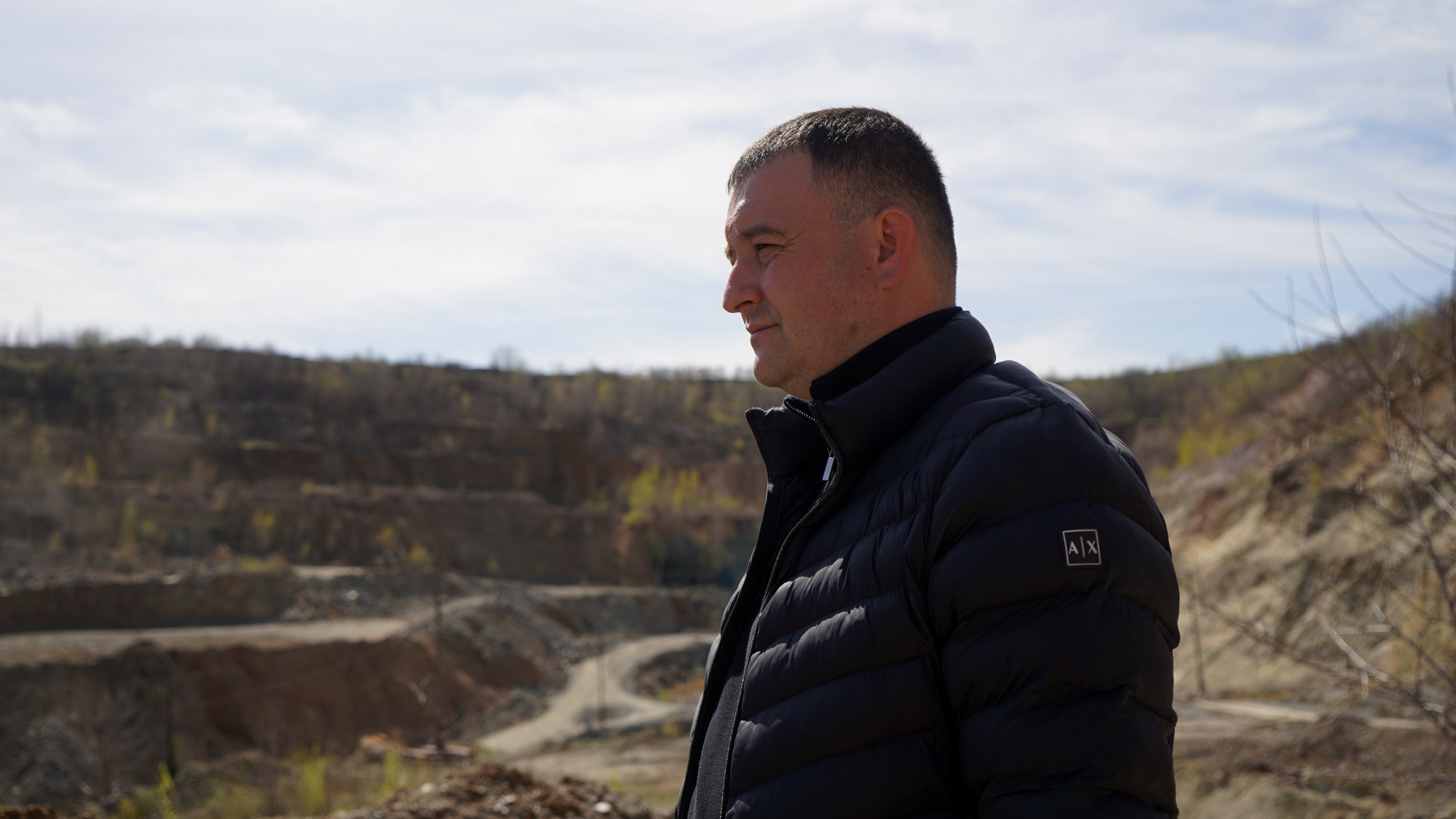
The mine, which has been in operation since 1934, is one of the largest in Europe—Semko told me it took a decade and 2,000 men to build it—and it produced 40,000 tons of graphite annually during the Soviet era. But war, energy shortages, and competition from China—whose graphite is lower quality but cheaper—have taken their toll. Even before the war, deindustrialization had led to an exodus of workers. The massive mobilization for the war effort only accelerated that.
“In November 2024, we managed to extract 860 tons,” Semko said. Still, the volumes are a far cry from pre-war levels: “Before the full-scale invasion, we produced between 10,000 and 17,000 tons annually. … Today, we could produce 150 tons a day, but the contracts—due to the war and competition from other countries such as China—aren’t there.”
It remains to be seen what effect the deal signed Wednesday in Washington, D.C., might have on the Zavallia mine. The agreement was the product of months of tense and at times hostile negotiations between the Ukrainian government and the Trump administration
Under the terms of the deal, Ukraine has agreed to channel 50 percent of future revenues from new state-owned resource projects—like lithium and uranium—into a joint fund with the U.S., which will provide financial and military support, including air defense systems. The fund will be co-managed with equal say and reinvested in Ukraine’s infrastructure and mining over the next decade, with no added debt.
Ihor Semko“We must continue living here, as we always have, and prosper. In 1994, we also signed an agreement—the Budapest Memorandum—which guaranteed our security in exchange for dismantling our nuclear arsenal inherited from the USSR. And we all see how that turned out.”
While Kyiv retains full control over its resources, the deal—limited to new projects—signals long-term American backing amid ongoing Russian aggression. The journey to the deal was a long one, however, and earlier negotiations frustrated the Ukrainians for being too lopsided in favor of the United States.
Driven by Republican Sen. Lindsey Graham, who has long argued that Ukraine’s wealth of mineral resources gives the U.S. reason to support the Ukrainian cause, the Trump administration pushed for an agreement linking military aid to privileged access to Ukraine’s natural resources. U.S. assistance would bolster Ukraine’s self-defense against Russian aggression but also secure long-term economic advantages for American industries reliant on rare earth elements, lithium, titanium, and other strategic materials.
However, America’s demands at the outset, including intrusive conditions such as granting Washington veto power over how Ukraine could use future profits from its mineral wealth and the creation of a Washington-controlled fund to receive 50 percent of revenues from the exploitation of Ukrainian state-owned resources, along with vague security guarantees sparked outrage in Kyiv.
It was these negotiations that reportedly led to the Oval Office dispute on February 28, followed by increasingly maximalist U.S. demands. Trump, for instance, suggested that the deal could serve as compensation for U.S. military aid to Ukraine since Russia’s 2022 invasion, which he randomly valued at $500 billion—although one German economic research think tank estimates the actual figure at around $114 billion.
Ukraine’s government promptly rejected the idea. These demands felt to Kyiv like a colonial diktat—essentially forcing Ukraine to cede its economic sovereignty.
In mid-April, Ukraine and the U.S. State Department signed a new memorandum laying the groundwork for future cooperation on strategic minerals, with Kyiv reaffirming its demands for sovereignty and long-term security guarantees. Two days later, on April 27, Prime Minister Denys Shmyhal clarified that prior U.S. aid to Ukraine would not be included as part of the minerals deal.
Finally, on Wednesday, the U.S. and Ukraine signed a new deal that Economy Minister Yuliia Svyrydenko hailed as a “win-win,” promising mutual success. The agreement still requires ratification by the Ukrainian Parliament.
Still, Ihor Semko isn’t quite sure what to make of it and prefers to stay pragmatic. When I spoke with him in April, he said he was open to American investment but remained skeptical of the proposal.
“If we sign a deal with the United States, it must be one that benefits Ukraine, not just the U.S. We must continue living here, as we always have, and prosper. In 1994, we also signed an agreement—the Budapest Memorandum—which guaranteed our security in exchange for dismantling our nuclear arsenal inherited from the USSR. And we all see how that turned out. It’s possible to sign deals, but they must be in Ukraine’s interest.”
Workers at the mine were cautiously optimistic about a potential deal, but also expressed concern that any deal might be too little, too late to truly improve the situation at the mine or the conditions of the surrounding community.
In a laboratory decorated with plants, 34-year-old Valentyna Duzhiy carefully packs a grayish powder into small molds before baking them. Valentyna is responsible for quality control of the graphite extracted from the mine. On a nearby table, a faded old book marked with a hammer and sickle sits carefully placed. Its title reads: Graphite: Methods of Analysis.
“We hope to find investors, find work, and make a living. Maybe they will help restart activity,” she says cautiously.
But if the plant currently suffers from a lack of contracts and decent salaries, the real crisis in Zavallia is manpower. War, mobilization, and emigration have been steadily hollowing out the region, even before the full-scale invasion.
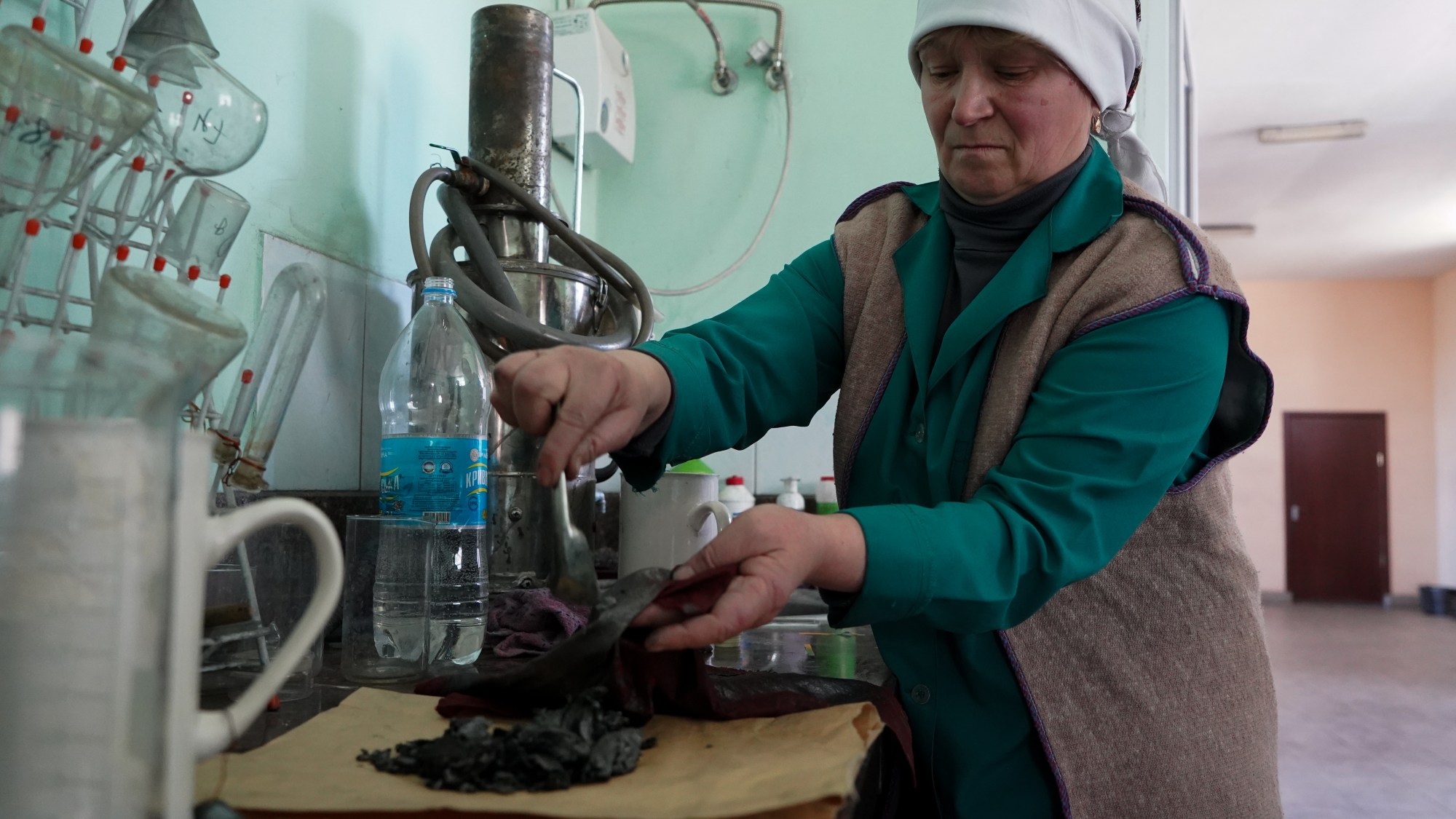
Alla Tkachuk, 56, has worked at the plant for 36 years. Her hair tucked under a small white cloth, she wears a blue work smock matching the color of the walls. Standing by a porcelain sink, she carefully filters the graphite, extracting samples to pass along to her colleague Valentina, who will take the next steps in the process. Born in the neighboring village, she has witnessed the slow collapse of local industry.
“Many houses are abandoned. People left because there’s no work,” she recounts. “Before the war, we had 250 employees at the mine,” Semko says. “Today, there are only 90 left.”
Alla explains that wages in the region are barely enough to survive: “There are no jobs in the villages. Survival now depends on vegetable gardens and small family farms.”
At 56, Alla takes care of her 80-year-old mother alone and works whenever the plant needs her: “Sometimes two days a week, sometimes three, sometimes less. I earn 58 hryvnias an hour—about one dollar.” Her two daughters have also left—one to Israel, the other to Kyiv.
She doubts that any foreign investment could truly turn things around, and she is unwilling to support any deal that infringes on Ukraine’s sovereignty.
“We are fighting for what belongs to us. Our children are dying for our land, our resources. Our whole life is here. We love our country, we are defending it,” she says, before whispering that temporarily conceding some resources might be acceptable: “If it helps support our national defense and our armed forces.”
Ihor Semko, for his part, shrugs fatalistically. He knows that even with foreign investments, there simply aren’t enough workers left to sustain the mine’s activities.
He also doubts any rapid expansion is possible—let alone the creation of new mining projects, as the Trump administration seems to envision: “About 1,000 kilometers from here, there’s a lithium deposit. Today, it’s just a steppe and a small shack, but we know there’s lithium underground. But it will take more than a year to dig, build, and start operations. Development will take five to 10 years—and we’ll still have to wait for the war to end.”
The drive out of Zavallia reveals the scars of decline. A scattered few elderly residents work in the fields of nearly abandoned villages. Two teenage girls meet at the edge of town, gazing into the distance, as if ready to flee. Further on, Ukrainian flags flutter on the horizon.
At the edge of a grove, the last rays of the sun glint off the golden dome of a church built among the fields. A cemetery comes into view. A woman is cleaning the headstone of a soldier. Several more military graves rise behind the steppe. Fresh flowers are laid there. The earth is still soft.
As if people only return to Zavallia to be buried.
Iryna Matviyishyn contributed to this story.
Correction, May 9, 2025: This article has been updated to correct the distance from Kyiv to the Zavallivsky Graphite Mine.
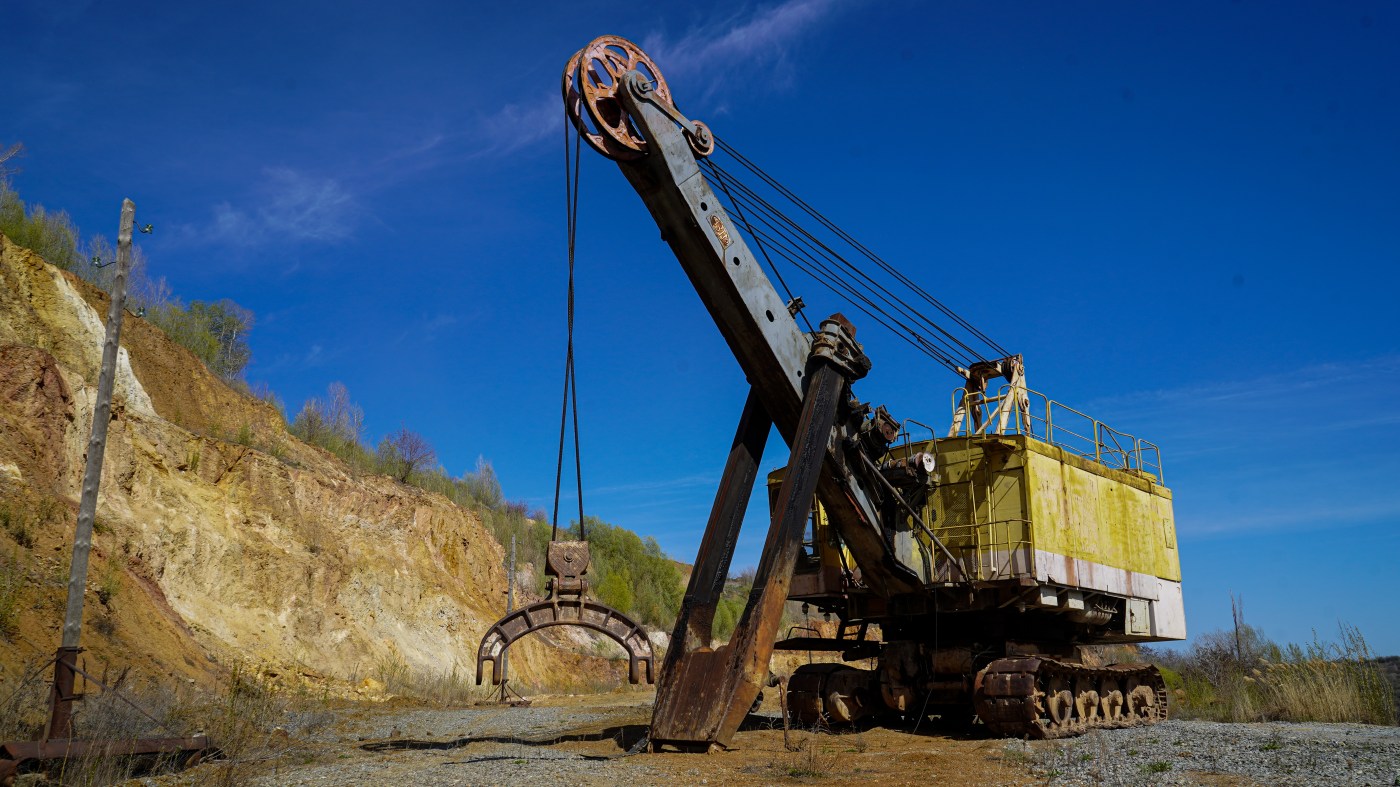
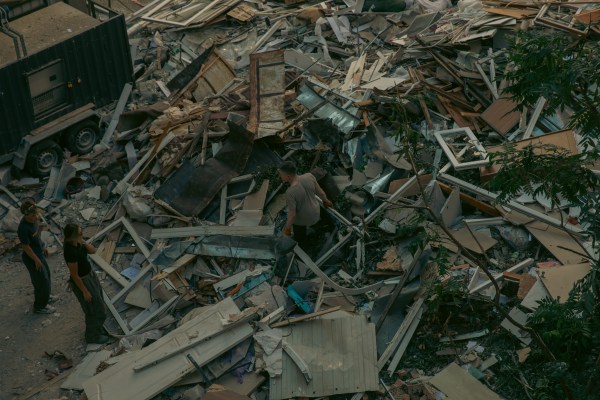
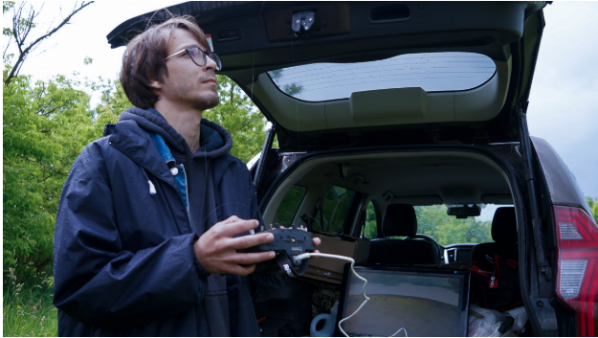
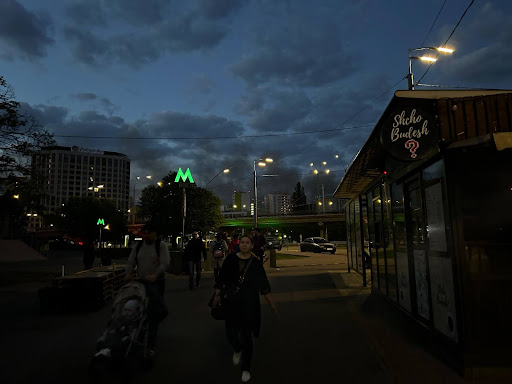

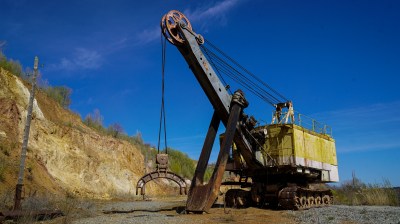
Please note that we at The Dispatch hold ourselves, our work, and our commenters to a higher standard than other places on the internet. We welcome comments that foster genuine debate or discussion—including comments critical of us or our work—but responses that include ad hominem attacks on fellow Dispatch members or are intended to stoke fear and anger may be moderated.
With your membership, you only have the ability to comment on The Morning Dispatch articles. Consider upgrading to join the conversation everywhere.